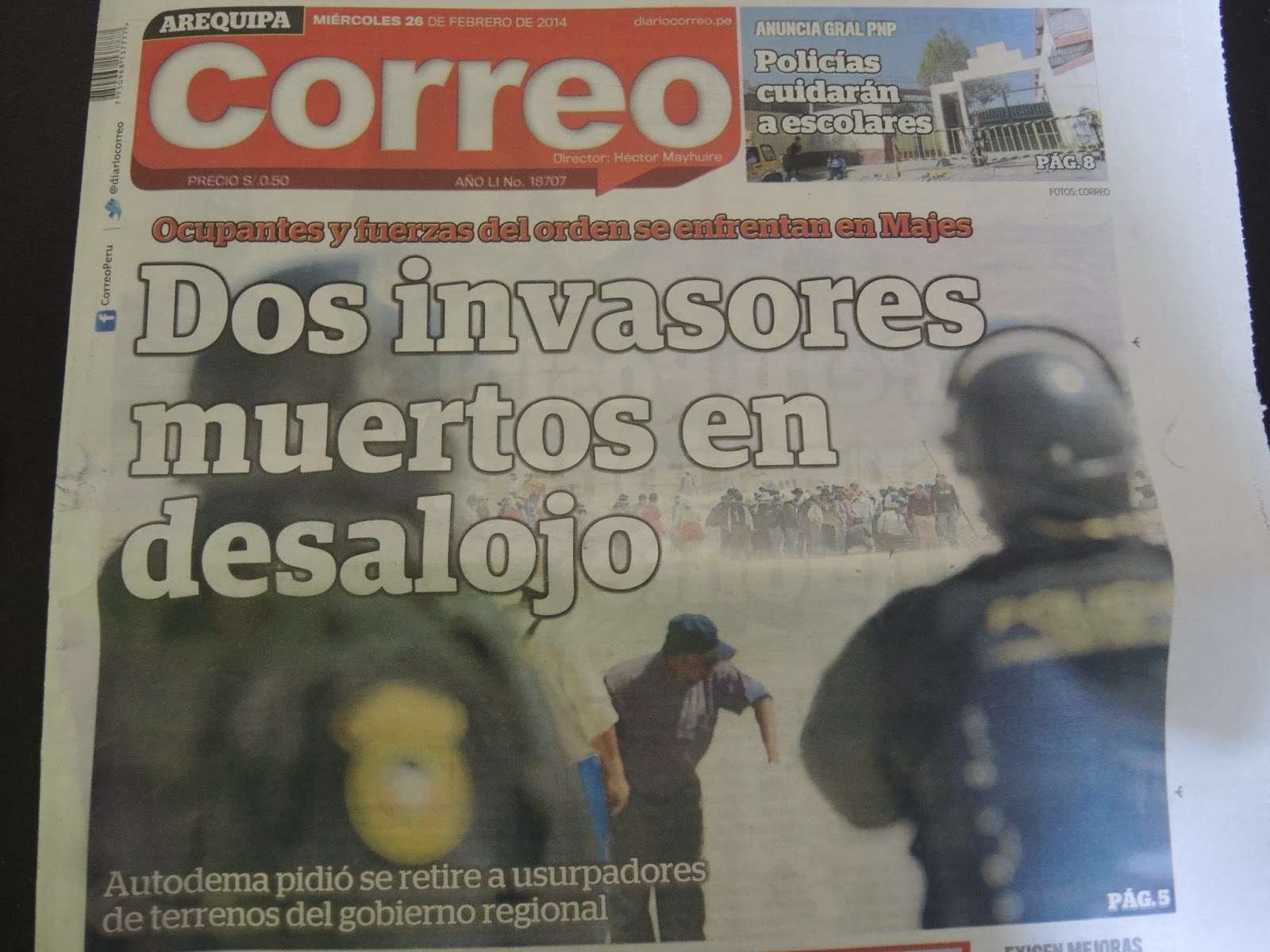For the last three months, the lack of rain and extreme frosts have severely affected the plants and animals in Caylloma province, and farmers and herders are facing difficult times.
In the
highlands, thousands of new-born alpacas have died of the extreme cold, and
there is a lack of pasture because of the drought.
In the
Colca Valley, 73,9 % of the potato harvest is ruined, and 65,3 % of the green
peas and over half of the maize and beans are lost (according to numbers from
the local office of the Agricultural Ministry in Caylloma).
Most of the
farmers have taken up loans from micro-credit finance institutions to invest in
seeds and fertilizers, and now they are left with no crops and a debt that has
to be paid. “The bank doesn’t pardon” (el banco no perdona), the saying goes.
“The whole
valley is in a crisis. We will feel it in 60 to 90 days” (Todo el valle estamos en crisis. En 60 o 90 días se va a sentir), the
mayor of Lari district told me in an interview.
Yesterday, the
20 district mayors from Caylloma province travelled to the Peruvian capital
Lima to present their demands to the central government. They demand that the
province of Caylloma should be declared in a state of emergency because of the
drought and the frost that have destroyed the mayor part of the crops. The
total economic damage makes a total of 20 million soles (7,1 million USD), and
they demand that the government cover this loss.
They also
have other demands, like a agricultural insurance, and that they get back the
money from the mining tax (canon minero) that has been cut, apparently because
of the decreasing mineral prices on the world market.
This is a
video-clip with a part of the interview that I did with the mayor of Lari, Guillermo Eloy Rojas
García, in Lari on Saturday 15 March. It’s just roughly edited, in Spanish, and
without subtexts yet. So I give you the explanation/translation here:
First, we
see how he shows me the potato fields and explain that the potato plants are
ruined, and the potatoes are tiny and deformed and cannot be eaten, sold or
used as seeds. Then he shows some maize field down below and explains how some
fields have been affected, while others are fine, because of the variations in
microclimate in the area. The potatoes and maize are the most vulnerable
plants, in addition to peas and beans, while the quinua and barley are more
resistant.
Afterwards,
we see the first part of a long interview in his office. He says that in Lari
district, 50 – 60 % of the crops have suffered because of extreme cold, snow,
but also extreme heat (up to 30 degrees Celsius) during the day. There has also
been a lack of rain, but it is especially the frost that kills the plants. This
affects the economy of the population; 98 % are farmers who cultivate potatoes,
maize, beans, and peas and raise cattle. This frost is something unusual, it
has never happened so drastically. We have had frosts before, but they were
benign, mild, he says. Then we could make the plant react by irrigation or
stimulation. But this time this has been impossible, because the frosts have
been fulminant (fatal). The population is worried, people feel impotent, there
are no remedy; ‘what do I do?’, people ask. And they all look to the
municipality, but the municipality doesn’t have the resources to mitigate.
“So we have
been obligated to unite with the other municipalities that have suffered from
this frost, making force to present demands to the Ministries, the Regional
Government and Presidency of the Ministers’ Council, that they give us some
support to mitigate this. On Tuesday, we will travel to the capital Lima to
make these demands in a formal way, and we hope that they will receive us.
There should be some hope to be able to satisfy this vulnerable population,
because these districts in Colca Valley live in poverty – we have overcome the
extreme poverty, but still have poverty. Still, the basic needs of several
families have not been satisfied. And another cause of this is also that there
are no other jobs for them, so they all dedicate themselves to agricultural
labour and this is their only income. I hope that this travel that we will make
on Tuesday will be announced in the national news in the capital, and well, we
hope for results.”
Here is a
video made by the municipality of Caylloma, with an interview with the mayor of
the province, Elmer Cáceres Llica (in Spanish):




